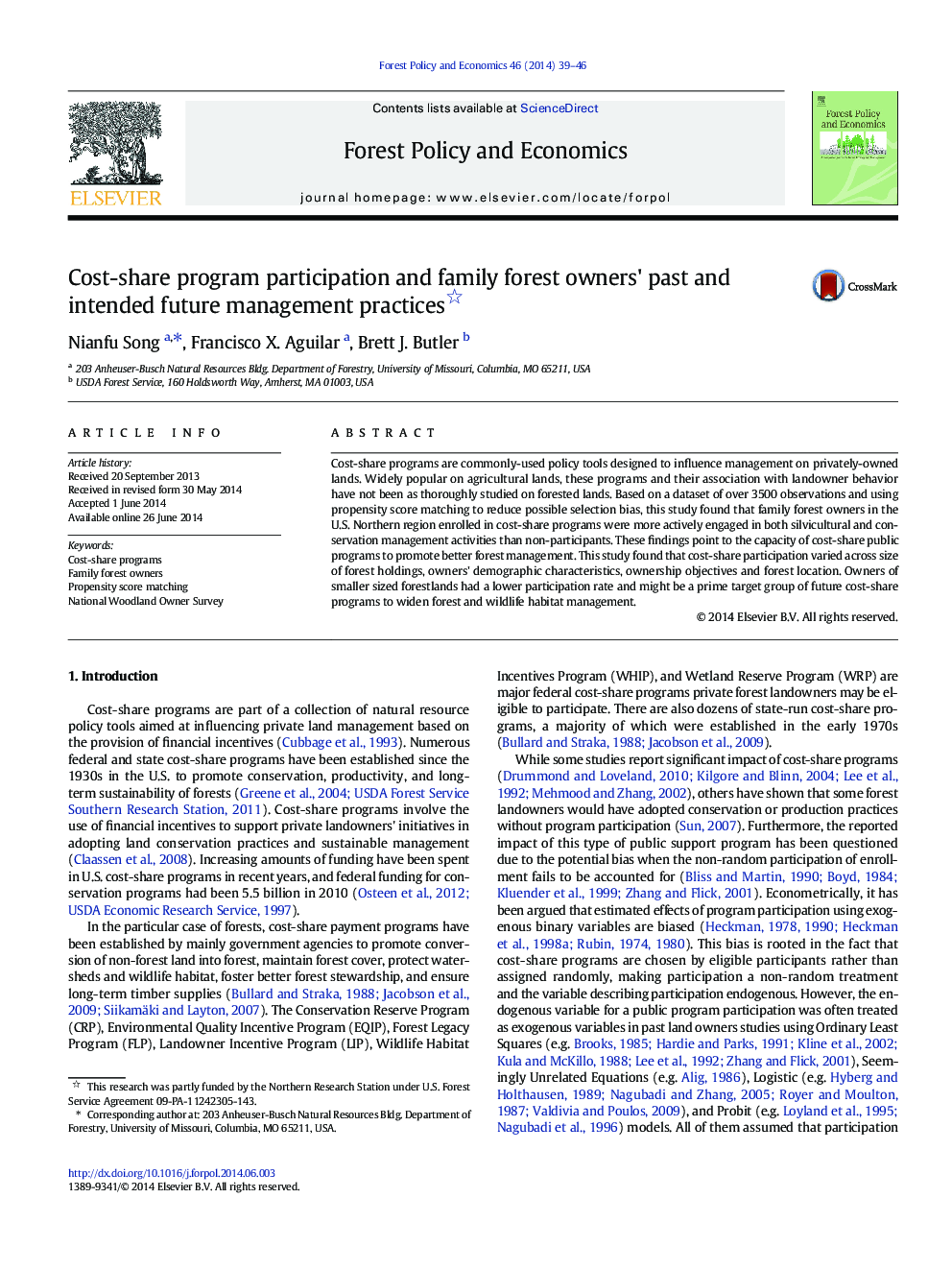| Article ID | Journal | Published Year | Pages | File Type |
|---|---|---|---|---|
| 91494 | Forest Policy and Economics | 2014 | 8 Pages |
•This study focuses on the impact of cost-share programs on forest management in the U.S.•Propensity score matching method is used to address potential bias caused by program participation•Small forest landowners responded differently from large landowners•Cost-share generally promoted tree planting, site preparation, and chemical application•Small owners are potentially to be affected more by future cost-share programs than large owners.
Cost-share programs are commonly-used policy tools designed to influence management on privately-owned lands. Widely popular on agricultural lands, these programs and their association with landowner behavior have not been as thoroughly studied on forested lands. Based on a dataset of over 3500 observations and using propensity score matching to reduce possible selection bias, this study found that family forest owners in the U.S. Northern region enrolled in cost-share programs were more actively engaged in both silvicultural and conservation management activities than non-participants. These findings point to the capacity of cost-share public programs to promote better forest management. This study found that cost-share participation varied across size of forest holdings, owners' demographic characteristics, ownership objectives and forest location. Owners of smaller sized forestlands had a lower participation rate and might be a prime target group of future cost-share programs to widen forest and wildlife habitat management.
